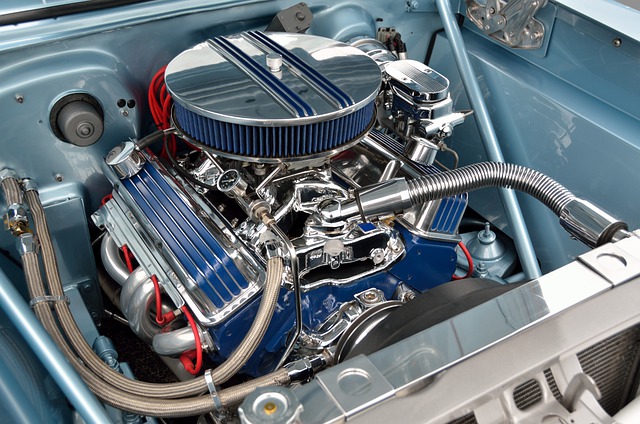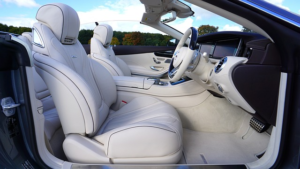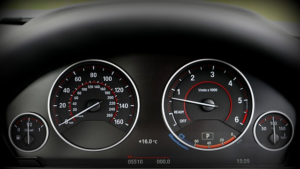Has closer racing in 2022 shown Formula 1 can live without DRS now? · RaceFans – RaceFans
DRS was originally introduced in order to aid overtaking, and was designed as a temporary fix for the turbulent air issue that makes it so difficult for the cars to get close enough to those in front to make an overtake. Although DRS was intended to be powerful enough to get the driver behind alongside the driver in front, but force them to still get the move done in the braking zone, it has ra…….

DRS was originally introduced in order to aid overtaking, and was designed as a temporary fix for the turbulent air issue that makes it so difficult for the cars to get close enough to those in front to make an overtake. Although DRS was intended to be powerful enough to get the driver behind alongside the driver in front, but force them to still get the move done in the braking zone, it has rarely worked like that and usually has caused overtakes to be too easy as the driver behind just caught up and sailed past on the straight, or if they couldn’t do it would drop away in the next few laps due to overheating from following another car too closely.
Whilst I believe that, in the last decade, DRS has been absolutely necessary to aid the excitement of Formula 1, particularly between 2017 and 2021, because otherwise the dirty air effect would just lead to no battling or overtaking at all and many processional races, I think the new cars for 2022 have been shown to be a considerable improvement in this area over the old cars, as they can really follow closely through the corners, and can then power past on the straight with DRS more easily than before. Many fans dislike the system because it creates ‘artificial racing,’ and I agree that this is something that should be avoided and thus only used when absolutely necessary, with a vision to be eliminated in the future. And I believe the 2022 cars are good enough that the time has now come to scrap DRS for 2023.
It cannot be scrapped right now because the cars have been built to run with DRS so it probably would lead to races being too processional this year, and would also be too big a change to be introduced mid-season and could give unfair advantages to some teams over others, but if it was announced today that cars would not be allowed to use DRS in 2023, it would give the teams an entire year to make adjustments to their cars so that they could overtake without DRS, as well as a few minor improvements to the regulations to aid overtaking without it, perhaps to do with altering the rear wings to increase the slipstream effect (which is similar to DRS but less powerful and also is an inherent feature of physics rather than an artificial button, and also reduces as soon as the car behind pulls out rather than them keeping it to the DRS line), that would probably be enough for the 2023 cars to be able to produce exciting racing without DRS.
Despite these changes, there is no doubt that there would be less overtaking in Formula 1 next year if DRS was scrapped, but I don’t think that is necessarily a bad thing. Firstly, we saw in Imola when DRS took a long time to activate that drivers were looking for different places to make an overtake instead of just waiting for the main straight and DRS, and as a result we got more exciting and skilful overtakes than usual. It is also worth noting that Imola has always been renowned for being a difficult track to overtake on, and yet we still got quite a few overtakes before DRS was activated. While there would be fewer overtakes without DRS, there would probably be more fantastic ones, and these are worth far more than easy DRS passes on the straights.
Secondly, scrapping DRS would make it easier for the car in front to defend, and often a great defence can be as exciting as an overtake, and certainly more exciting than an easy overtake. One of the most famous Formula 1 races of all time is the 1981 Spanish GP, where Gilles Villeneuve held off a long train of faster cars for many laps to win the race. With DRS, they would have driven past him immediately, and with no DRS, we could see battles where the car behind is slightly faster but unable to overtake due to the lack of DRS, and thanks to the new cars being better at following the battle could last many laps, and may eventually get past or may be stuck for the rest of the race, or have to try another pitstop. This was slightly evidenced in Spain as Verstappen’s DRS wasn’t working properly and George Russell defended exceptionally well against him for quite a few laps.
I think these battles would be far more exciting to watch than the car behind going past easily on the straight with DRS immediately and then disappearing up the road. For a more recent example, Hungary 2021 is one which happens very rarely because it required Hamilton to be significantly faster than Alonso, enough that he could catch back up without overheating, and Alonso to be fully determined to use everything to defend, and also a good enough driver to do so. With no DRS and less turbulent air, this could happen far more often. The Pierre Gasly and Lewis Hamilton battle in Imola was effectively an example of this too, but where the overtake didn’t happen, as both drivers had DRS due to Gasly being close to Albon, so cancelled each other out.
And as well as these two things making the races more exciting, they would also massively increase the amount of skill required to win in Formula 1. While raw speed is the most important skill needed to be the best F1 driver, race-craft should also be important and currently, DRS makes it less important than usual as any driver can overtake any driver by opening the rear wing on the longest straight and blasting past. By scrapping DRS, it would require real skill to make any overtake, and would also be possible for slower drivers to defend, so someone like Alonso, Verstappen or Hamilton would have more of an advantage because they would be able to win these kind of battles due to better race-craft being more important. It could also lead to instances where a two-stop strategy is faster than a one-stop but only if the driver can make the overtakes quickly enough and strategists would have to gamble on whether their driver was good enough at overtaking. This happens already, of course, but would be more common without DRS. An interesting fact is that Lewis Hamilton, Sebastian Vettel and Fernando Alonso are the only current drivers who have raced in Formula 1 without DRS.
I think all these factors make it very clear that racing without DRS is far better than racing with it, but the big enemy of Formula 1 is the effect of turbulent air, and the question is whether these aforementioned battles would be able to happen with the turbulent air slowing the car behind down. It may be that the effect of turbulent air would still be too much that these battles couldn’t happen and DRS is required to keep us with a lesser version of them, in which case F1 should still be looking to improve the cars sufficiently to reduce this effect to the point that DRS can be scrapped in the future, but I think, on the evidence of the first sixteen races, the current cars are possibly already good enough and 2023 is the year to finally scrap DRS.
It is also worth noting the longer we keep it, the harder it will become to get rid of DRS because all the drivers and teams will be so used to it. I think that, at the very least, DRS should be removed on half the tracks, the ones where it is less important, for 2023, with the view of getting rid of them on all the tracks with a few more adjustments to the cars to make them easier to overtake.






